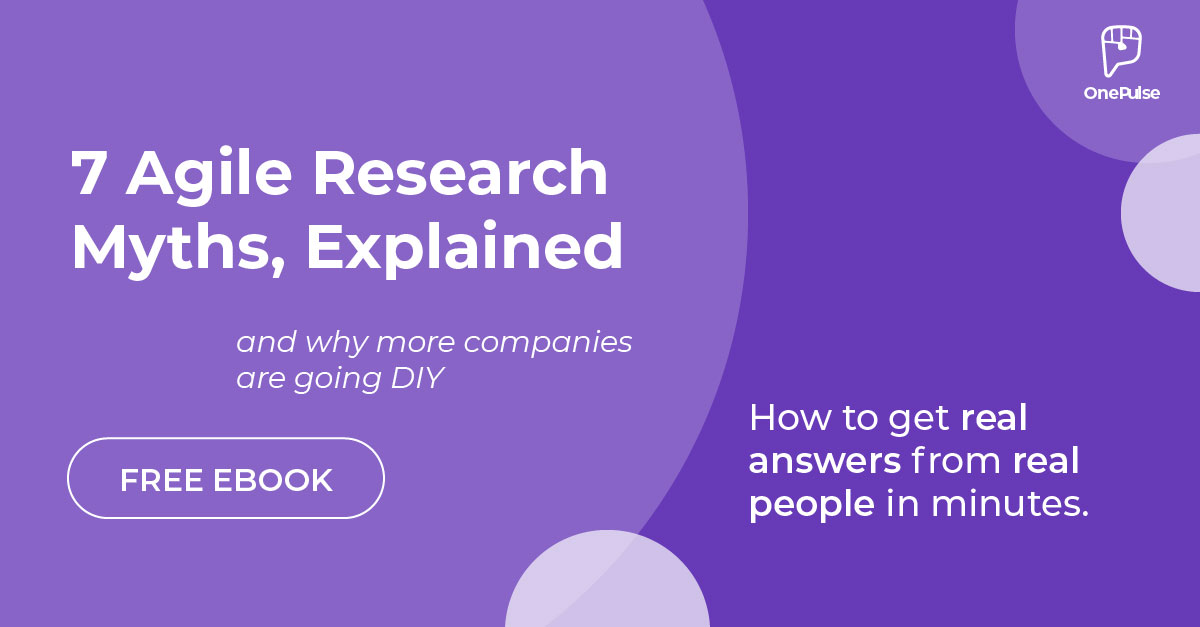Using Research to Guide the New Product Development Process
[…]

Why Agile Research Is A Match Made in Heaven For Your Product Development Team
Do you ever see an ad for a product and think “why did someone create this?” Surely at some point in the new product development process, someone would have said this was a bad idea.
From New Coke to the Segway, history provides several examples of new products that bombed when they hit the marketplace.
The best new product development process is one that involves research at every step. No one has the time or money to risk a new product failing when it finally reaches the market.
By adopting an agile research approach, companies can increase their chances of developing and delivering a rockstar product. In this guide, we’ll explain the agile research methodology and how it applies to each step in the process of product development.
Recommended: 10 indisputable benefits of mobile online surveys for forward-thinking brands
What is Agile Research?
Agile research utilizes a continuous and fast approach to collecting feedback. Instead of waiting until a product is out of development to create a lengthy market research study, an agile approach allows companies to get a quick pulse of consumers’ ideas. Using an agile approach enables companies to be more nimble so they can test and tweak the concepts based on consumer feedback.
6 Step Process of Product Development
From idea to product, a lot goes into getting a product to market. Most new product development processes follow the same steps:
- Idea
- Research
- Plan
- Prototype and Test
- Production and Preparation
- Launch
Step 1: Idea
All products start with an idea. There’s a common misconception that most products start with inspiration to build or design something totally new and amazing. The reality is most successful products focus on solving a problem or improving an existing product.
Common approaches to idea generation in new product development include:
- Crowdsourcing. Ask people what they want. Software companies often post a public view of their roadmap and ask their customers to contribute ideas or to vote on which features to prioritize for development.
- Incremental improvement. Cell phone and car manufacturers excel at making small improvements to existing products. They release new versions of their products on an almost yearly basis. They incorporate feedback from customers to improve or introduce new features. The evolution of fingerprint to facial ID to unlock iPhones is one example.
- Breakthrough. These types of new products create a new market or disrupt and redefine existing markets. These types of innovations are rare and require extensive research and development. Examples include Dyson entering the vacuum cleaner market or Netflix disrupting video rental and traditional cable television.
Think about the products you use on a daily basis. How could they be improved? What products would you happily buy to fix something? With agile research and quick surveys, you can identify potential customers’ pain points. Understanding what problems consumers face enables you to design the best solution and products.

Step 2: Research
Once you have a general idea of the problem you’re trying to solve and the product you want to build, it’s time to research the viability of your idea. Try to answer the following questions:
- What products are already on the market like this?
- What products have tried to address this problem in the past?
- What’s the potential market size for this product?
- How much would people pay for a product like this?
- What would it cost to make this product?
- What distribution channels would you use?
The goal of the research phase is to determine if there’s a market for your product and if you can profitably make and sell the product. Utilize short surveys to gauge consumer reactions to your product and to gain insights on potential pricing and market size.
Step 3: Plan
Take the results of your research to develop a business plan and plans for your actual product design. After this phase, you’ll build a prototype of your product. Use research questions during this phase to help finalize your plans for your MVP or minimal viable product. An MVP is the most basic version of your product that you can launch and still gain traction in the market. Ranking scale and rating scale questions can help you determine which features are essential for your MVP and which can wait for a later release.
Step 4: Prototype and Test
Now it’s time to build your prototype. For physical products, the prototype is what you’ll use as the sample for mass manufacturing. For digital products, like software, the prototype is what you’ll use to test and find any bugs in the product. Most products go through multiple rounds of prototyping. You can use surveys to guide your iterations of the prototype. Get real-time feedback about any changes while you’re finalizing your MVP. This feedback is a key benefit of using agile research and product development strategy. You can make improvements and fix issues before you go to market.
Step 5: Production and Preparation
Once you’ve finalized your prototype, it’s time to get your product into production. You’ll need to secure supplies and a manufacturing partner or build your own manufacturing facility. While your production gears up, take this time to finalize your go-to-market strategy. Use surveys to get feedback on everything from your packaging to marketing campaigns.
Step 6: Launch
The preparation is done. Let’s start selling. You might be tempted to take a break and just celebrate launching a new product. However successful products and companies continuously innovate. You can launch with a minimal viable product, but you don’t want your product to stay at a minimal level. Use research surveys to identify growth opportunities and features enhancements that can take your product to the next level. For more tips on market expansion, check out our post on market development strategies.
Using Agile Research in Your New Product Development Process
Navigating the new product development process is challenging enough. Conducting research shouldn’t be. At OnePulse, we’ve taken the hassle out of getting fast and actionable feedback from consumers.
Related posts

Why wait to hear what your customer is thinking?
It looks like your browser is set to
Click here to view the website in .







